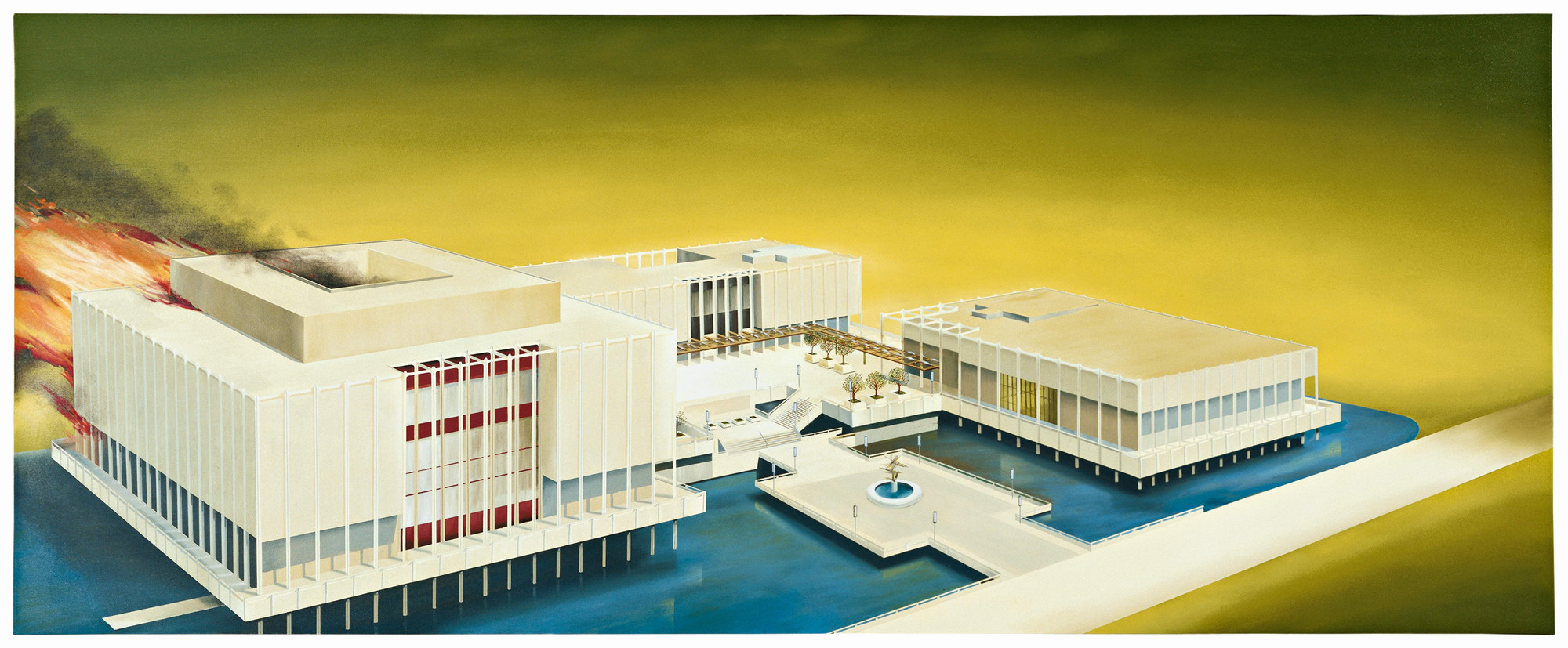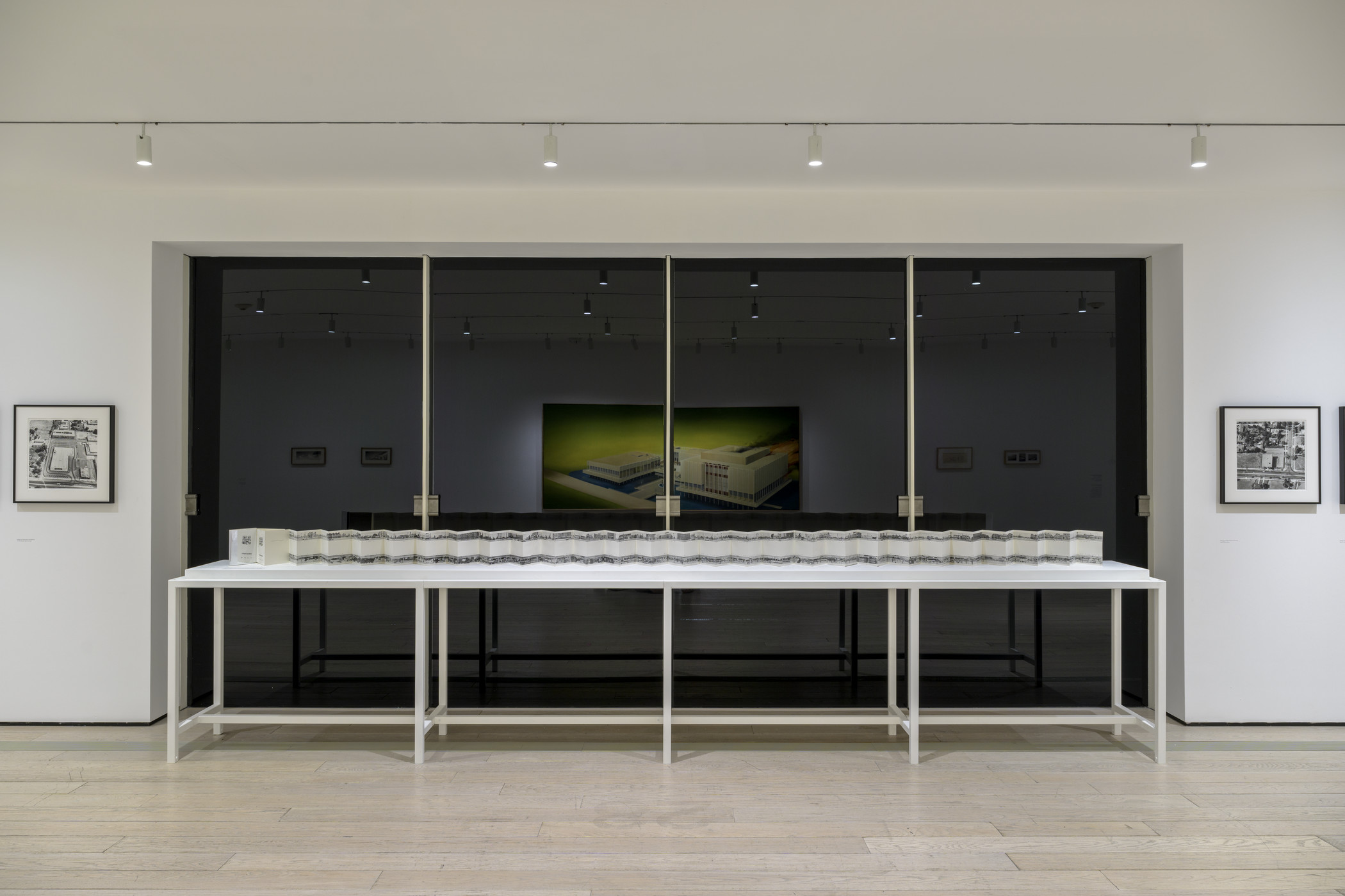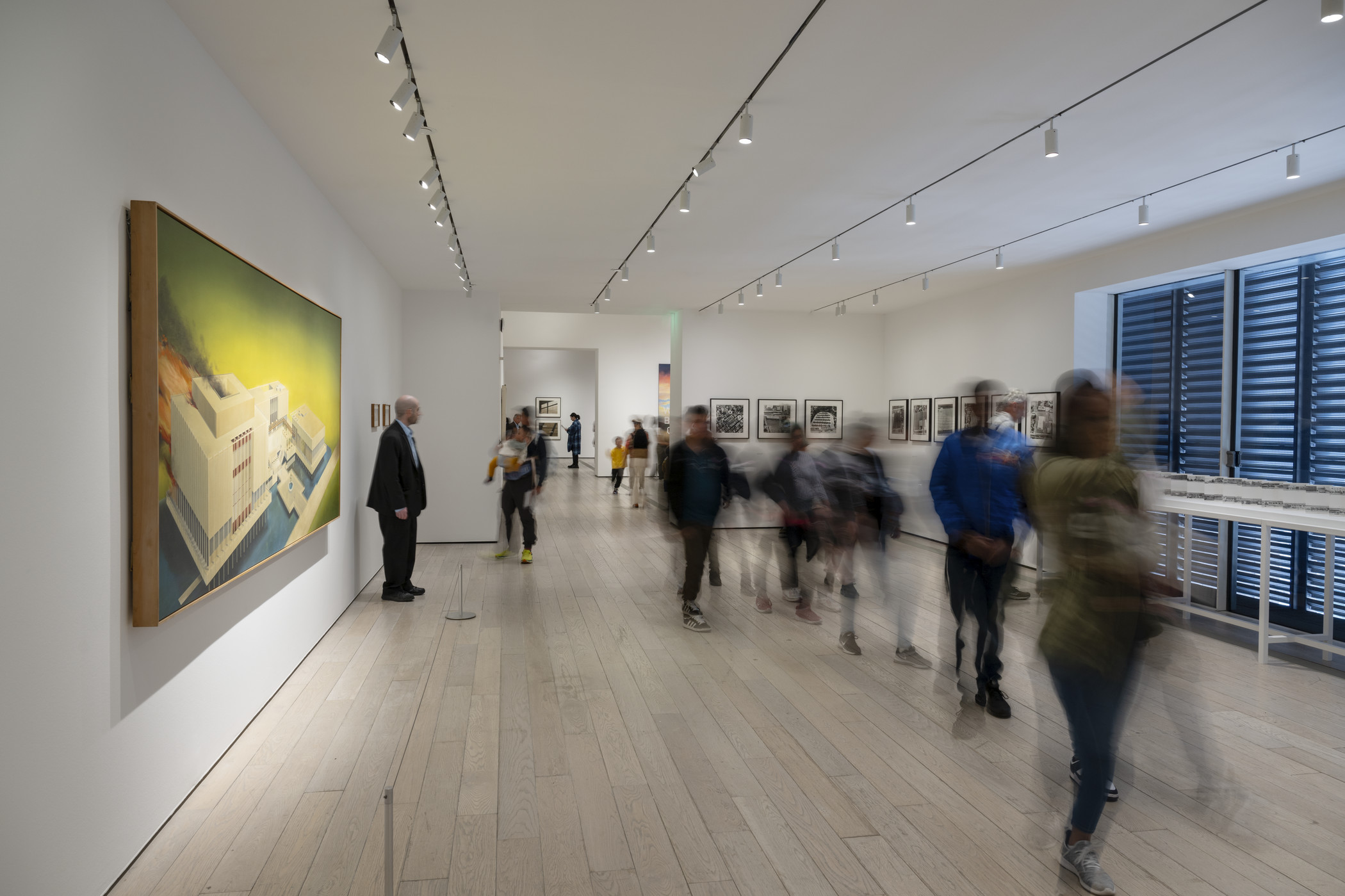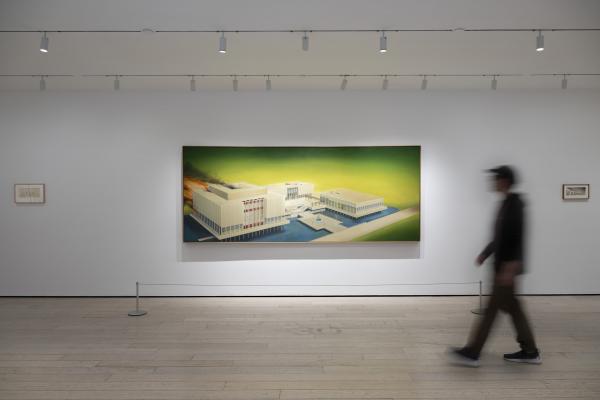As we approach the closing weekend of ED RUSCHA / NOW THEN, we would be remiss to pass on the opportunity to highlight the artist's now-famous painting Los Angeles County Museum of Art on Fire (1965–68).
For those who may not be familiar with the museum’s history, in 1961, the Los Angeles County Museum of Art became its own institution, separate from the Los Angeles Museum of History, Science, and Art in Exposition Park. LACMA opened its then-new Wilshire Boulevard location to the public in 1965, signaling a new era in the city’s cultural development.
In his detailed portrayal of the original William Pereira–designed campus and its glistening, shallow reflection pool, Ruscha imagines the northern part of the museum on fire. But, let’s be clear: the museum was never on fire! The painting did, however, spark discussions about the role of cultural institutions, especially in light of its imagery of destruction. Many viewers found it provocative, prompting conversations about the relationship between art, urban development, and community.

In an interview in 2008, Ruscha said, “I'm not lighting fires. It's a way of attaching an additional meaning to the painting that would otherwise not have fire—if I can be so simple to say. And it's fun to paint fire.” Asked if “there isn't an embedded desire to burn the Los Angeles County Museum,” Ruscha answered, “No. But if you want to see that as a political painting, you can—a revolt against an authority figure.”
Since then, our colleagues at the Museum of Modern Art have asked about it again, and Ruscha has said, “About this time that I was painting this picture, I had some oh, maybe, personal gripes about the art world in general. And I felt like the museums were not really doing their jobs as far as opening their doors to contemporary art.” He continued, “I didn’t have a hatred for museums, but maybe, like, I had a healthy distrust for museums. And so I guess part of this painting grew out of that. I didn’t know how this painting would be perceived.”

While ED RUSCHA / NOW THEN, co-organized with MoMA in New York, is arranged chronologically, the oil painting stands a bit out of sequence at LACMA as the curators aimed to place the work in a special “chapel” at the exhibition’s halfway point. Overlooking Wilshire Boulevard from BCAM, Level 2, the painting stands around four feet tall and 11 feet wide, facing the street as the building once did in 1965. On either side of the painting, the original Polaroid pictures of the museum taken from a helicopter ride and preparatory drawings of the aerial perspective give insight into the artist’s process. The painting is also surrounded by Ruscha’s series of black-and-white photographs of parking lots and the accordion-style artist book Every Building on the Sunset Strip (1966), allowing the painting’s colors to pop in a monochromatic room.
With over 450 works by Ruscha in LACMA’s collection, the museum has built and cared for an extensive collection of one of the most keen observers of our rapidly changing world. Los Angeles County Museum of Art on Fire, however, is not in our collection, even though LACMA contemplated buying the painting in the late 1960s. To that, Ruscha said, “The museum actually had a notion to possibly buy that painting, which really surprised me, and then didn’t surprise me so much when they didn’t.” The work was ultimately collected by Joseph Hirshhorn shortly after it was completed and now lives at the Hirshhorn Museum and Sculpture Garden in Washington, DC. While the work will return to the other side of the country once the exhibition comes to an end, Los Angeles County Museum of Art on Fire will always have a special place in the Los Angeles imagination.

In October of 2010, fiction writer Michael Crowe reached out to LACMA’s Balch Art Research Library with an unexpected but intriguing request regarding the painting. He wanted to find out what part of the building that fire, had it been real, would have affected and what artworks would have perished. Our senior librarian, Pauline Wolstencroft, working with our registrar’s department, set out on a search into the collection that was on view when the work was created.
The outcome was a seven-page list of objects in the seven galleries that would have been buned by the fire on the north side of the building depicted in Ruscha’s painting. They include Isaac Moillon’s Sophonisbe Drinking Poison (1653), a Pakistani Ritual Tray with a Nereid (Sea Nymph) and a Cherub Riding the Sea Monster Keto from the first century BCE, and Billy Al Bengston’s Grace (1959), to name just a few. For those interested in the full list, a pamphlet titled A List of Art Which Would be Destroyed If Ed Ruscha’s Painting “Los Angeles County Museum on Fire” Became Reality is housed in the Balch Art Research Library’s Special Collections, available to view by appointment. Fortunately, as the fire was purely hypothetical, all the works remain safe in LACMA’s collection.
ED RUSCHA / NOW THEN is on view in BCAM, Level 2, through Sunday, October 6.



